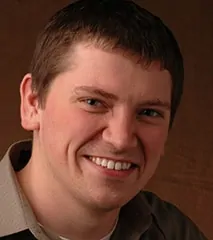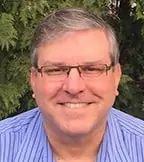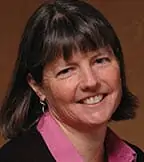

Temporary Landfill Caps
Temporarily capping landfill slopes is becoming a common measure for landfill operators. There are many benefits to closing landfill slopes with geomembrane on a temporary basis. One of the benefits is delaying construction of the final cover. Following is a discussion of the steps that should be taken to determine whether temporarily capping the slope with geomembrane and postponing the final cover construction is a better financial/operational decision.
Cost Burden
Constructing the final cover is costly, and it is considered an unavoidable expense that has no return on the money spent. Therefore, some operators perform a financial evaluation to determine whether the final cover construction costs can be delayed (provided, of course, that such delays are acceptable to the regulating agency). When evaluating whether to delay the final cover, the cost of maintaining the slopes during the postponement period should be considered. The operator must look at the financial aspects of either closing the slopes with a temporary geomembrane or of leaving the slopes open during the postponement period.
Temporary Landfill Capping Option
The benefits of temporarily capping the slopes during the postponement period may include:
The other side of the coin is the expense associated with the temporary cap. There may be repair costs associated with the geomembrane every few years in order to ensure that the temporary cap remains intact.
Leaving Slopes Open Option
The option of leaving the slopes open during the postponement period involves maintenance expenses such as:
The benefits of leaving the slopes open are twofold: first, the operator will save the costs of constructing the temporary cap; and second, the operator will gain additional airspace as waste settles during the postponement period.
Experience with the Temporary Capping Option
As discussed above, both options provide the benefit of gaining additional airspace during the postponement period. Constructing a temporary cap involves the costs of materials and installation, including the geomembrane and the ballasting system that keeps the geomembrane in place. Generally, the financial and non-tangible benefits of a temporary cap that remains in place five years or longer are more attractive than leaving the slopes open; therefore, most operators choose to install a temporary cap. The next step in the financial evaluation should be comparing the costs of the temporary cap to permanently closing the slopes without postponement.
Final Step in the Financial Evaluation
The next question is whether it makes financial sense to postpone the construction of the final cover.
Waste settlement during the postponement period and the resulting airspace are considered the determining financial factor in choosing the right option. If the present worth value of the airspace generated from waste settlement during the postponement period is greater than the cost to construct the temporary cap at the present time, then the temporary cap option would make financial sense; otherwise, the final cover should be constructed without postponement.
It should be noted that the length of the postponement period plays a very important role in this financial equation. Longer postponement periods have the potential for a greater gain in airspace. Another incentive that should be factored into the financial evaluation is the potential return on the money set aside for the final cover construction during the postponement period.
To assist with this financial evaluation, landfill operators are encouraged to discuss these options with their landfill engineers. Settlement models can be performed to calculate the amount of airspace that may be generated during the postponement period as well as the present worth value of the generated airspace. The returns on the final cover construction costs during the postponement will just be “icing on the cake.”
Read the related Advice From the Field blogs from the landfill and LFG experts at SCS Engineers:
Contact the author: Ali Khatami or your local SCS Engineers’ office.
On October 11, SCS Engineers’ David Hostetter and Phil Carrillo present several case studies during the webinar demonstrating how Remote Control Monitoring (RMC) has lifted the burden of data collection and facilitates the review and analysis of data for use in decision-making.
In this webinar, several case studies regarding remote monitoring and control (RMC) systems for landfill gas and leachate systems will be presented. This includes a description of integrated systems which are used for data collection and analysis and how they were used to identify, troubleshoot and solve real problems in an effective and efficient manner.SCS recognized this as an issue in the industry and developed systems to streamline the process using the latest technology to help perform routine, sometimes complex, data analysis, and to automatically push reports and alerts to operators, engineers, and project managers. This has been a dramatic change that removes human error while reviewing pages of data and allows people to focus on what really matters.
RMC systems give the ability to:
Watch Dave’s video here: https://www.youtube.com/watch?v=pYezcobr1Cg
Dave explains how landfill owners/operators use SCS RMC® to view, operate, and control field equipment. The presentation covers how SCS RMC® helps to reduce operating costs – sending technicians to respond when necessary to alerts from flare systems, leachate systems, and air quality sensors. SCS helps manage all field resources and personnel better while enhancing reporting and data management too.
Register for the EREF webinar here: https://erefdn.org/event/remote-monitoring-and-automating-processes-at-landfills/
A variety of CCB/CCP related topics guaranteed to enhance your knowledge. Click the title to read or share these papers.
Jeff Marshall – Mitigating Hydrogen Sulfide Issues at Coal Combustion Residuals and Municipal Solid Waste Co-disposal Sites – Learn about the biological, chemical and physical conditions necessary for FGD decomposition and hydrogen sulfide generation. Marshall will explore technologies that remove and treat hydrogen sulfide from landfill gas and present recommendations for reducing the potential for FGD decomposition at co-disposal facilities.


SCS Engineers’ Phillip E. Gearing, PE is a winner of the SWANA 2017 Young Professional Award from the Wisconsin Badger Chapter. The Solid Waste Association of North America honors individuals like Phil who make a significant difference in the solid waste industry.

Phil represents the best of the young professionals working within Wisconsin’s solid waste industry. Clients, contractors, and team members appreciate Phil’s leadership and passion for doing the job right.
He is a dedicated father of three children and an avid fan of all things Wisconsin, namely Badger sports, Green Bay Packer football, and Brewer baseball. Wisconsin from head to toe! Phil was raised on a dairy farm in Jackson County near Merrillan and attended the University of Wisconsin – Madison where he earned his B.S. in Geological Engineering, Geology, and Geophysics.
Phil serves clients out of the SCS Engineers office in Madison, WI.
Read about Phil’s work and SWANA award here.
Despite the fact that you have taken every precaution, hitting utility lines or other hidden infrastructure is still relatively common. Even after all the records are consulted and metal detector tests completed, you can dig up an entire storage tank that wasn’t accounted for or find a random pipe with no apparent usefulness.
Having a tool that can get you down there without damage is a significant benefit to those in the field. SCS recommends using the Hydrovac or Air Knife technologies, tools that can save money and time when working on sites with sensitivities or a longer historical background when the risks are highest.
SCS uses these tools when drilling at a transfer station near older or deeper power lines. We find utilities can be buried deeply below ground or are not encased in metal pipes, making metal detectors useless.
When remediating a historic property for developers with nearby utility lines and there’s a question about the accuracy of the records, it is far safer and cost efficient to use these newer technologies to dig a hole as small as for setting a mailbox, or as large as digging an entire site for construction.
The Hydrovac and Air Knife will both remove soil cover and allow you to see any underground utilities or infrastructure before excavation or drilling. The Hydrovac uses pressurized water and a vacuum system to remove soil. The Air Knife accomplishes the same thing using compressed air instead of water.
SCS Engineers can provide a range of equipment sizes and capabilities including:
By Thomas Karwoski and Sherren Clark
About the Authors:


Links to SCS Services: CCR, Landfill, and Remediation pages.
On Friday, Dec. 16, 2016, President Obama signed The Water Infrastructure Improvements for the Nation Act or the “WIIN Act.” Section 2301 of the WIIN Act allows states to establish permit programs to regulate the disposal of coal combustion residuals (CCR) units in lieu of the Environmental Protection Agency’s (EPA) CCR regulations and published at 40 CFR 257, Subpart D, also known as the federal CCR rule, that were effective as of October 19, 2015.
Under the federal CCR rule, enforcement has been through citizen suits brought under Section 7002 of the Resource Conservation and Recovery Act (RCRA). Following WIIN, for CCR disposal facilities operating under an approved permit program, citizen enforcement will be replaced by more traditional state and federal enforcement authorities. It will take time for states to apply for permit authority and to issue permits, and in the meantime the federal CCR rule will continue to be enforced by citizen suits, and utilities will be subject to potentially conflicting interpretations of what is required to comply at a given facility.
Other CCR-related highlights from the WIIN Act include:
The WIIN Act that was passed by the U.S. Congress on Dec. 10, 2016, is based on CCR legislation that has been introduced in the House of Representatives and Senate in various forms over the past 6 years with the support of many in the utility industry. The WIIN Act has been lauded by the U.S. Senate Committee on Environment and Public Works and utility groups alike.
For example:
“This new permitting authority fixes the main problems with the recent coal ash regulation issued by the Environmental Protection Agency, by removing citizen suits as the sole means of enforcement and allowing states to tailor permit requirements on a case-by-case basis.”
“The coal ash language will ensure that states have the authority and flexibility they need to regulate coal ash while protecting the environment as much as the current EPA coal combustion residuals rule,” said APPA Vice President of Government Relations and Counsel Desmarie Waterhouse.
Coal Ash Language Backed by APPA Is Headed to President’s Desk
“…these legislative provisions will enable states to be more involved in the permitting process for the closure of basins.”
EII Applauds Passage of the Water Infrastructure Improvements for the Nation Act
“The bill also injects greatly needed certainty into the regulation of coal ash by giving states clear permitting and enforcement authority and reducing litigation, while providing for its continued beneficial use.”
SCS Engineers will continue to track the WIIN Act and provide you with updates as states consider and make known their approach to developing a CCR permit program, or not.
For questions about the Act or more information, please contact:
Mike McLaughlin, PE, Senior Vice President
Eric Nelson, PE, Vice President
Steve Lamb, PE, Vice President
Kevin Yard, PE, Vice President
Or contact your local SCS Engineers office.
A typical SCS landfill expansion project contains an engineering evaluation and analyses addressing important technical considerations which include the existing hydrogeologic conditions, global slope stability, Landfill base settlement, geomembrane compression and strain, leachate pipe strength, useful life of the existing infrastructure and utility lines, stormwater management, leachate and landfill gas system expansion.
This case study site, it shows that the vertical or piggyback expansion of a landfill is a unique way of solving landfill airspace shortage problem. Its feasibility is always site specific and depending on the existing waste types, slopes, liners, design capacity of leachate and gas collection, and stormwater management systems. In addition, the landfill design needs to be thoroughly investigated, engineered, and operated.
From the results of the global final slope stability and the landfill base settlement analyses, it concluded that a vertical expansion at the case study landfill will not increase the risk to human health or the environment over the existing regulatory approved conditions. A vertical expansion provides the landfill owner with an opportunity to increase the landfill volume and provide the residents with the maximum service life within the existing footprint of the permitted Landfill. This maximization of available resources does not expand the environmental footprint of the site and provides better environmental protection and at the same time creates a sustainable landfill site.
A vertical expansion provides the landfill owner with an opportunity to increase the landfill volume and provide the residents with the maximum service life within the existing footprint of the permitted Landfill. This maximization of available resources does not expand the environmental footprint of the site and provides better environmental protection and at the same time creates a sustainable landfill site.
This case study was presented at ISWA 2016.
Read and share the complete case study here.
On Saturday, November 12, SCS Engineers Superintendent John Jones made an unexpected discovery at work. During his CQA inspection at the Okeechobee Landfill, John discovered an injured American bald eagle on the floor of a cell in the project area. With the help of friends from Arnold’s Wildlife Rehabilitation Center (AWRC), the young eagle was rescued and is now recovering at Arnold’s facility.
No one knows how the eagle became injured, but three eagles were observed earlier in the morning in what appeared to be territorial combat. The young bird had the good luck of being found by John and according to Sue Arnold, the founder of AWRC, “is on his way to a full recovery and will be released back into the wild.”
When asked if the eagle has been named, Sue Arnold said they don’t usually name the rescued animals because their ultimate goal is to rescue, rehabilitate, and return recovered animals to their natural habitat. She suggested, “call him ‘JJ’ since John took the time and effort to help us rescue the eagle, which is awesome.”
The south-central Okeechobee landfill, run by Waste Management, provides local businesses and industry with professional disposal services that are safe and meet the highest standards for environmental compliance. The Landfill is a certified wildlife habitat as well. The site is certified by the National Wildlife Habitat Council. Okeechobee dedicates 2,000 of its 4,100 acres as a wildlife habitat that will soon become home again to the young eagle JJ.
Arnold’s Wildlife Rehabilitation Center, Inc., is a non-profit 501(c) educational-based wildlife care facility. The Center is dedicated to bringing people and wildlife together to develop a community awareness of the value of Florida wildlife.
We’ll keep you posted when JJ’s release into the wildlife habitat is planned.
Getting a firm handle on a solid waste operation and expenses is a challenge for any solid waste agency manager or landfill operator. It is particularly imperative in this era of “lean and mean” budgets and looming regulatory policy. Doing more with less is the watchword for most operations across the country still reeling from the financial impacts of the Great Recession.
SCS Engineers has created a package of articles to help you identify if your landfill, landfill gas, or solid waste operation is ready for 2017. We hope this useful guidance will help you plan for the upcoming year. SCS professionals are always available to answer questions and provide advice. Find the office or SCS professional nearest to you by clicking on one the links here: Offices and Professionals.
Download, print or share this package by using the download button under the articles or by using the navigation at left. The package includes the following information written by SCS National Experts:
Article in Waste360: explains who’s impacted and how to begin managing the costs.
SCS Technical Bulletin: a digest of hundreds of EPA regulatory policy into the information and timelines to act on now.
Article: strategic financial planning to support infrastructure costs.
Call our compliance specialists – find the office nearest you or email us at